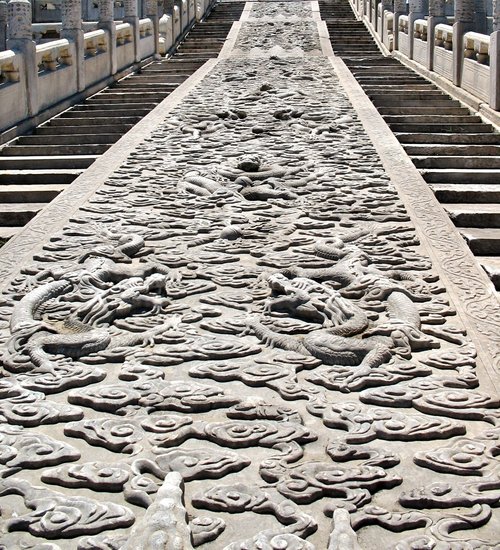I visited the Imperial Palace in Beijing twice. Once in 2006 and again in 2007. A true exploration of the site runs about half a day. It is worthwhile to explore the side sections of the palace. Each side passage or courtyard reveals something new and is quite interesting to search out these areas in depth. Moreover, large restored sections of the palace are being opened every decade. Surprisingly, vast sections of the palace are still closed and are scheduled to be revealed to the public in due course. Try not to visit the palace in the Summer or the weekend if possible as it gets clogged with people (literally).

One thought that stays with me about the Forbidden City, is that its a remnant of a different time and place that is not simply ended, but a relic that plays a nationalistic purpose for the current regime. The rule of Qing Emperors (indeed Imperial rule) came to an end on February 12th, 1912, after a pro-longed and degrading decline. Some of this story is told on screen in the classic film (Italian Director, British Writer), The Last Emperor. The film examines the conflict between tradition and modernity, but also the changing of regimes. When I made my way to and arrived at the Imperial Palace, I could not escape the symbols present in Tiananmen Square and the entrance, the massive painting of Mao and his Mausoleum. Because unlike many other historic palaces around the World, political power in Contemporary China remains very close to where it has been for the last millennia, along the Central Axis and adjacent to it. The Chinese Communist Party has a complex relationship with their nations History, condemning Imperial rule, but celebrating Chinese achievements and using the boundaries of past dynasties as basis for modern territorial claims.
100 Year Anniversary of the 'Palace Museum' (1925 - 2025)
In 1924, Puyi was forced to leave the Forbidden City and it became a public museum the following year. Today, when you cross that threshold (Meridian Gate), you enter a space that represents thousands of years of Imperial Rule. Outside it you are surrounded by the current regime.
Excerpt from the Centennial Symposium Speech held on 10.10.25 "Standing at a new starting point, the representatives stated, we must use the study and practice of Xi Jinping Thought on Culture to strengthen cultural confidence, foster the cultural identity of the Chinese nation, and truly make the Palace Museum a leading example for world heritage conservation."
Flickr Album